Text



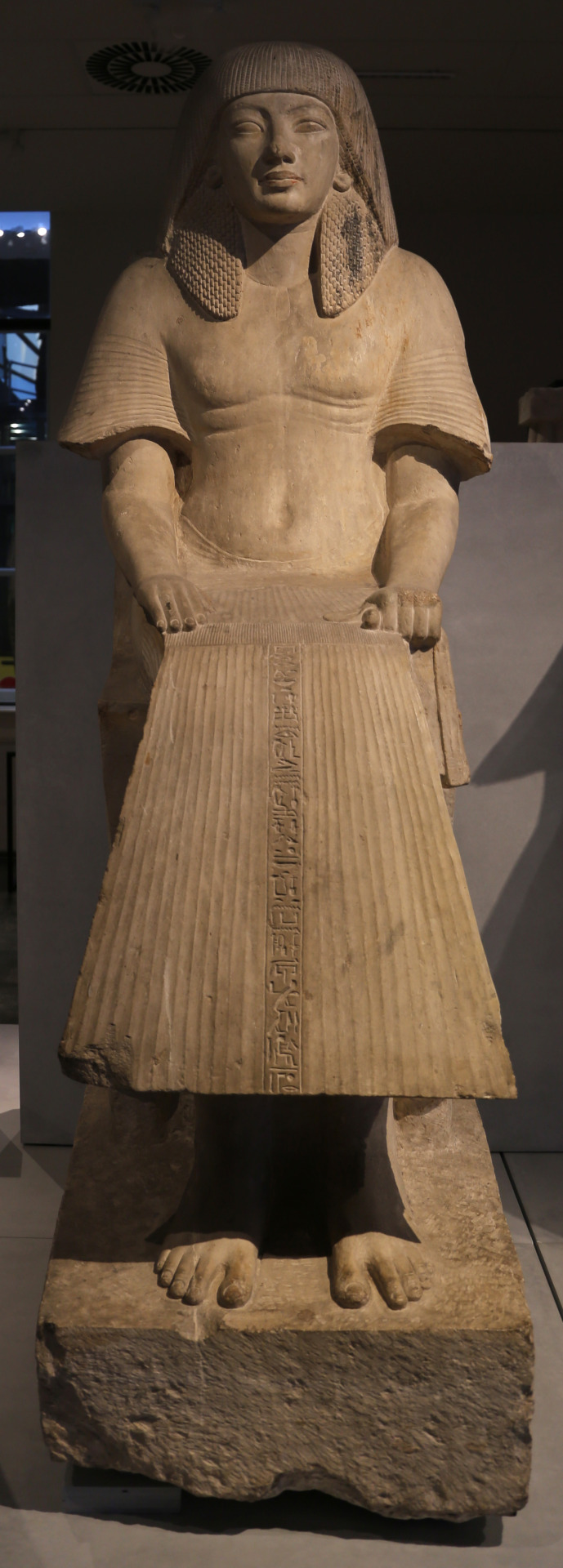
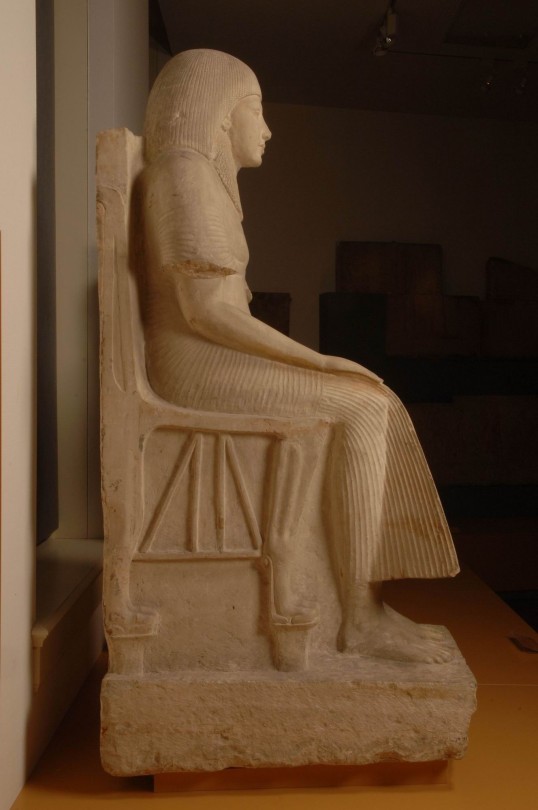
Sitting Image of Maya - Rijksmuseum Von Oudheden Collection
Inventory Number: AST 1
New Kingdom ; 18th Dynasty; Horemheb 1319-1307 BC.
Location Information: Egypt, Saqqara, tomb of Maya
Description:
Maya is 'director of the treasury' or Minister of Finance and Public Works during the time of Tutankhamun. This larger-than-life grave statue testifies to his high position. Maya is the man who prepares Tutankhamun's tomb. At the same time he had his own grave built at Sakkara by the best artists. Maya holds office under Pharaoh Horemheb and dies in his 9th year of reign.
Additional Image Sources:
Wikimedia Commons, @ User Sailko
Wikimedia Commons, @ User Eric de Redelijkheid
#rijksmuseum von oudheden#AST 1#sitting image of maya#new kingdom#new kingdom pr#dynasty 18#lower egypt#saqqara#mens clothing#NKPRMC
2 notes
·
View notes
Text



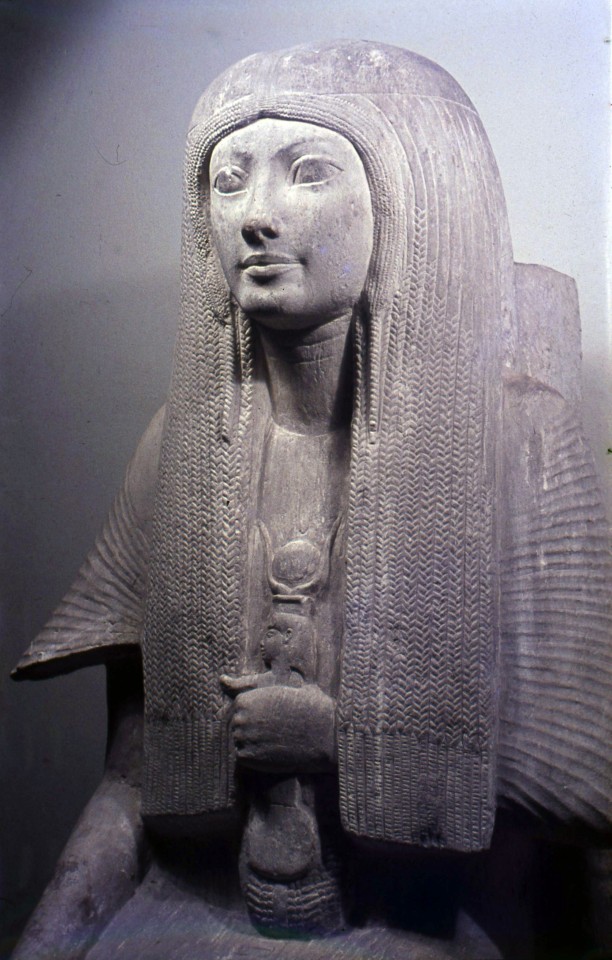
Sitting Image of Merit - Rijkmuseum Von Oudheden Collection
Inventory Number: AST 2
New Kingdom ; 18th Dynasty; Horemheb 1319-1307 BC.
Location Information: Egypt, Saqqara, tomb of Maya
Description:
Merit is Maya's wife. Like many notable ladies, she bears the title 'singer of Amon'. In her hands she holds a menat: a necklace of many strings of beads with a figure of the goddess Hathor as a counterbalance in the neck. This is used as a rattle to accompany temple chants.
Additional Image Source: Wikimedia Commons, @ user Sailko
#sitting image of merit#rijksmuseum von oudheden#AST 2#new kingdom#new kingdom pr#dynasty 18#saqqara#lower egypt#tomb of maya#womens clothing#NKPRWC
1 note
·
View note
Text
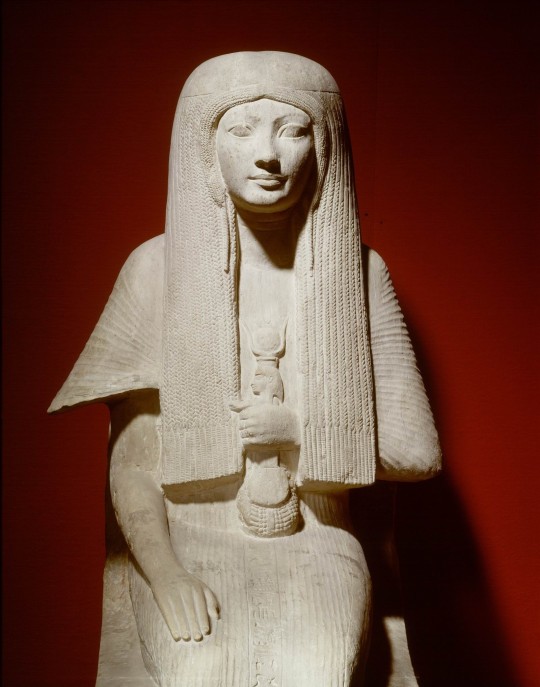
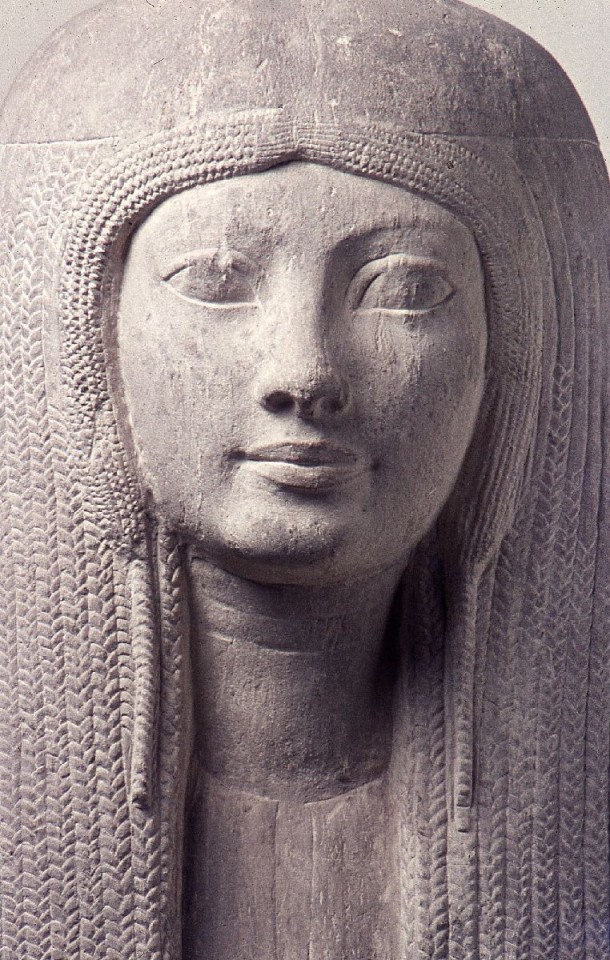

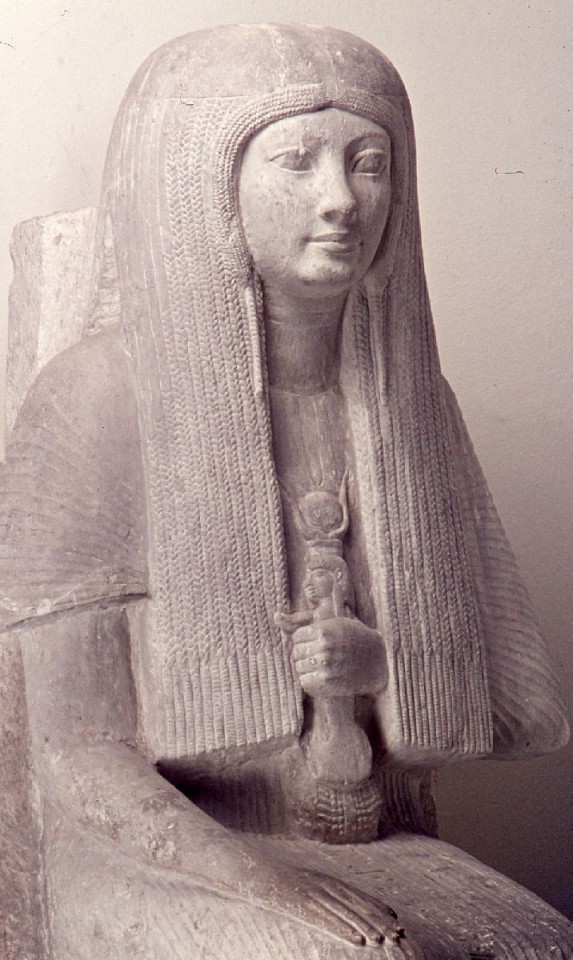



Sitting Image of Merit - Rijkmuseum Von Oudheden Collection
Inventory Number: AST 2
New Kingdom ; 18th Dynasty; Horemheb 1319-1307 BC.
Location Information: Egypt, Saqqara, tomb of Maya
Description:
Merit is Maya's wife. Like many notable ladies, she bears the title 'singer of Amon'. In her hands she holds a menat: a necklace of many strings of beads with a figure of the goddess Hathor as a counterbalance in the neck. This is used as a rattle to accompany temple chants.
#rijksmuseum von oudheden#Sitting Image of Merit#AST 2#new kingdom#new kingdom pr#dynasty 18#saqqara#lower egypt#tomb of maya#womens hair and wigs#NKPRWHW
1 note
·
View note
Text


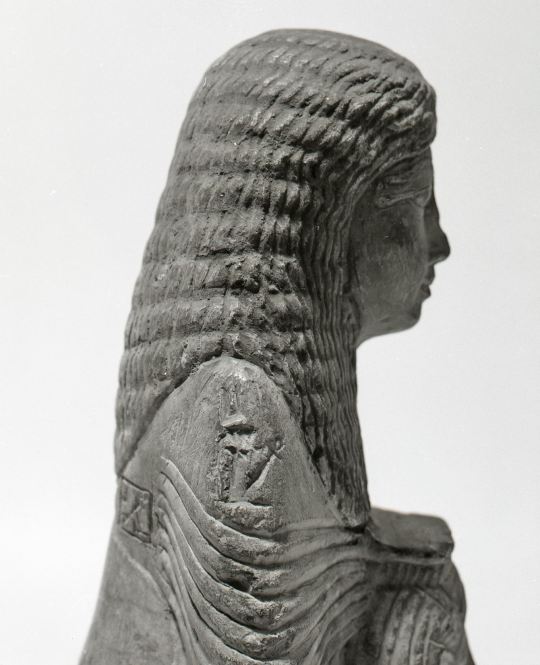

Statuette of a dignitary offering a standard with the head of the goddess Hathor - Museo Egizio Collection
Inventory Number: Cat. 3036
New Kingdom, Dynasty 19, 1292–1076 BCE
Location Information: Location Unlisted
Description:
The inscription on the standard identifies the goddess as Hathor of Byblos (modern Lebanon). Egyptian deities, and Hathor particularly, are found in local forms associated with specific towns. The goddess, the consort of the sun god and a nurturing mother, is depicted with a human face and cow ears. The wide and rounded face of the dedicator, his chiseled features, the long wavy and crimped wig, as well as the voluminous pleated garment, firmly date the statuette in the Ramesside period.
#Statuette of a dignitary offering a standard with the head of the goddess Hathor#museo egizio#Cat. 3036#new kingdom#ramesside#dynasty 19#location unlisted#mens hair and wigs#NKRMHW
1 note
·
View note
Text


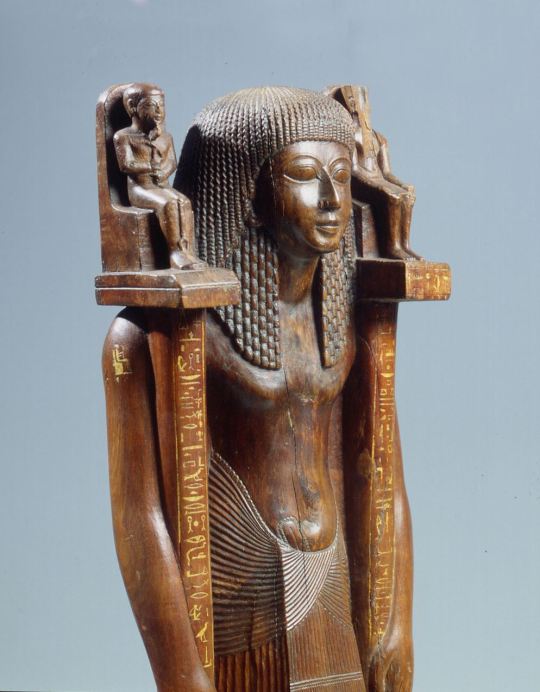

Standard-bearing statue of Penbui - Museo Egizio Collection
Inventory Number: Cat. 3048
New Kingdom, Dynasty 19, 1292–1190 BCE
Location Information: Deir el-Medina
#Standard-bearing statue of Penbui#museo egizio#Cat. 3048#new kingdom#ramesside#dynasty 19#deir el medina#deir el-medina#upper egypt#mens clothing#NKRMC
1 note
·
View note
Text

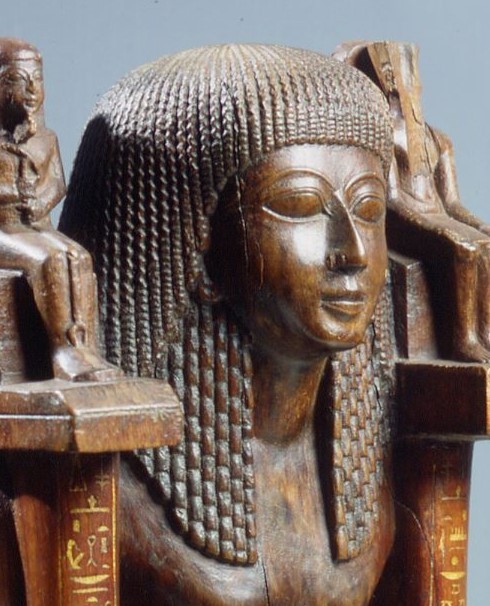

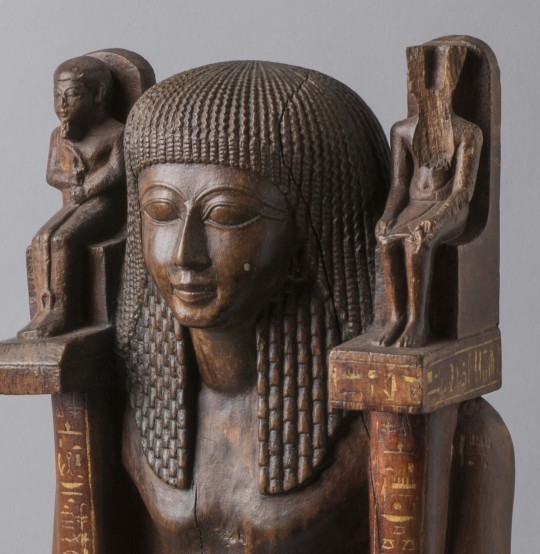
Standard-bearing statue of Penbui - Museo Egizio Collection
Inventory Number: Cat. 3048
New Kingdom, Dynasty 19, 1292–1190 BCE
Location Information: Deir el-Medina
#Standard-bearing statue of Penbui#museo egizio#Cat. 3048#new kingdom#ramesside#dynasty 19#deir el medina#deir el-medina#upper egypt#mens hair and wigs#NKRMHW
2 notes
·
View notes
Text

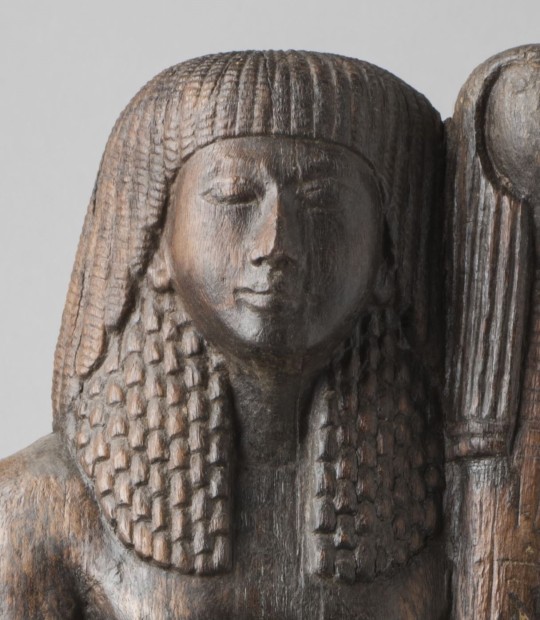


Standard-bearing statue of Pashed on a base that is not its own - Museo Egizio Collection
Inventory Number: Cat. 3047
New Kingdom, Dynasty 19, 1292–1190 BCE
Location Information: Deir el-Medina
#Standard-bearing statue of Pashed on a base that is not its own#museo egizio#Cat. 3047#new kingdom#ramesside#dynasty 19#upper egypt#deir el medina#deir el-medina#mens hair and wigs#NKRMHW
2 notes
·
View notes
Text

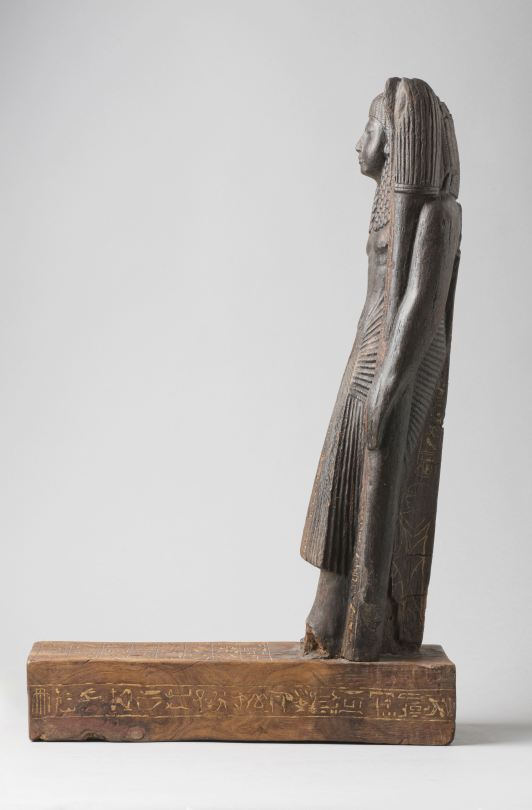



Standard-bearing statue of Pashed on a base that is not its own - Museo Egizio Collection
Inventory Number: Cat. 3047
New Kingdom, Dynasty 19, 1292–1190 BCE
Location Information: Deir el-Medina
#Standard-bearing statue of Pashed on a base that is not its own#museo egizio#Cat. 3047#new kingdom#ramesside#dynasty 19#deir el medina#deir el-medina#mens clothing#NKRMC#upper egypt
1 note
·
View note
Text

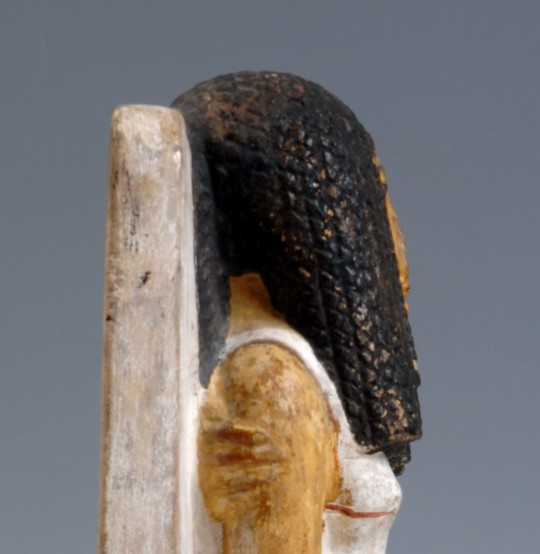
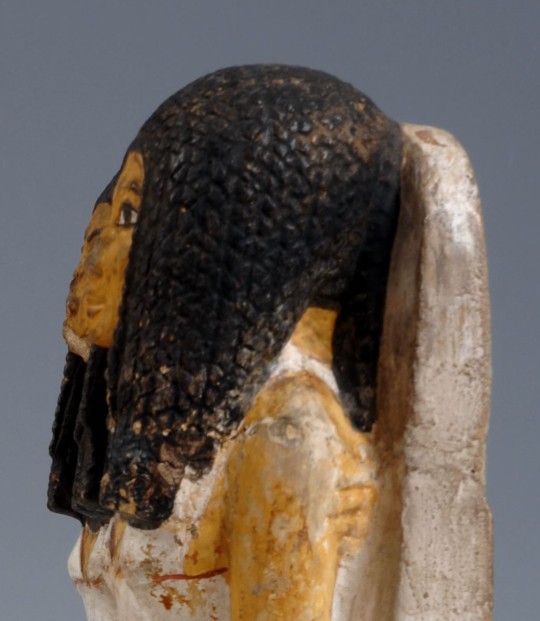
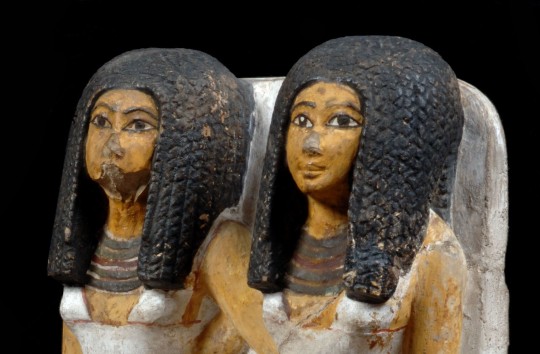
Statue of Idet and Ruiu - Museo Egizio Collection
Inventory Number: Cat. 3056
New Kingdom, Dynasty 18, 1480–1390 BCE
Location Information: Theban necropolis
Description:
The kinship relation between the two women, if any, is not specified. The sculpture seems to place more importance on Idu, as she is seated on the right, the place of honor, and is called “lady of the house” (nebet per), while no title is given for Ruiu. On the right of the seat is an offering formula “to Osiris… lord of eternity, that he may give… every good and pure thing, and the pleasant breeze of the north wind, to the ka ('soul') of the lady of the house Idet, justified”; the formula is repeated for Ruiu, with several variations, on the opposite side.
#Statue of Idet and Ruiu#museo egizio#Cat. 3056#new kingdom#new kingdom pr#dynasty 18#theban necropolis#upper egypt#womens hair and wigs#NKPRWHW
1 note
·
View note
Text
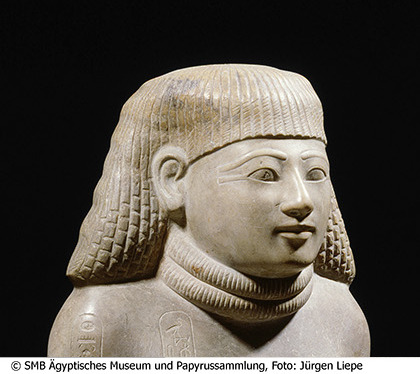

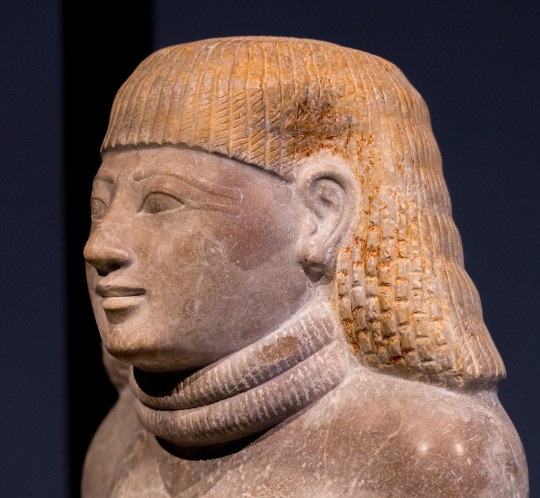



Sitting figure of Maja - Staatliche Museen zu Berlin Collections
Inventory Number: ÄM 19286
Tutmose III (18th Dynasty, New Kingdom, Egypt)
Location Information: Akhmim (? / Egypt / Middle Egypt)
Description:
Maja was a high official of the provincial administration. He was installed as Gouverneur and head of the Priests in the 10th upper egyptian district by king Tutmose III, who's name is written on the chest and right upper arm. His grave was found in the necropolis of the main settlement of that district and it is speculated that this figure was also from there. Maja sits upright on a simple stool. The text tells us names and titles of the deceased, as well as the sacrificial rites for the local deities. He is dressed in a short skirt, originally reserved for the kings, but later also found with private persons. He holds in his right hand a sweat cloth, while the left isflat on his skirt. The round expressionless face is, like the entire figure, structured very formal. A wig that was in keeping with the taste of the time was literally placed over the head. The two necklaces, consisting of disc pearls, as well as the massive upper and lower arm bracelets, are awards made of gold that the king had given him. They probably indicate former military service.
Credit: Staatliche Museen zu Berlin, Ägyptisches Museum und Papyrussammlung / Jürgen Liepe
Other Images Used for Display:
Wikimedia Commons, @ User ArchaiOptix
Wikimedia Commons, @ User ArchaiOptix
Wikimedia Commons, @ User ArchaiOptix
Wikimedia Commons, @ User ArchaiOptix
Wikimedia Commons, @ User ArchaiOptix
#Sitting figure of Maja#Staatliche Museen zu Berlin#Ägyptisches Museum und Papyrussammlung#dynasty 18#new kingdom#new kingdom pr#Akhmim#middle egypt#upper egypt#ÄM 19286#mens hair and wigs#NKPRMHW
1 note
·
View note
Text

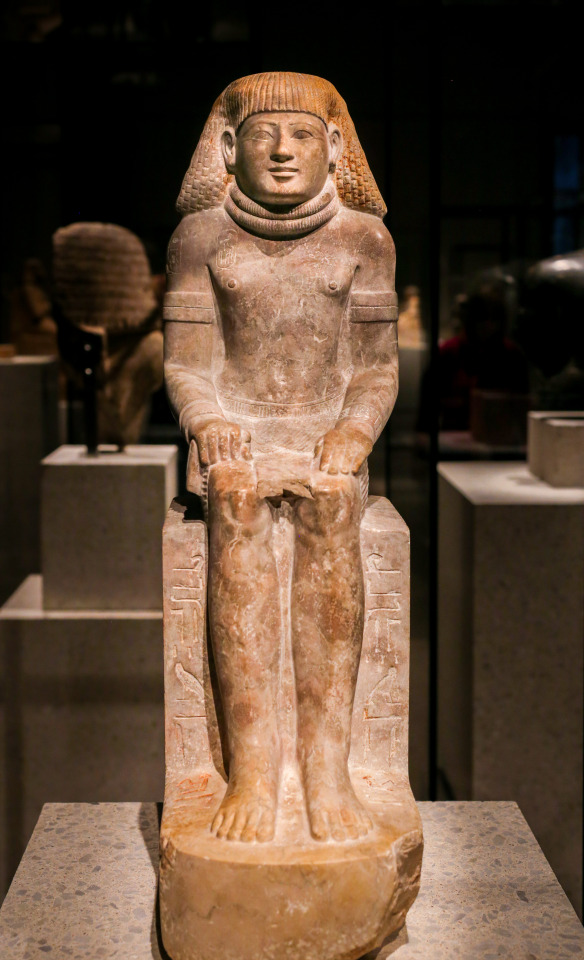




Sitting figure of Maja - Staatliche Museen zu Berlin Collections
Inventory Number: ÄM 19286
Tutmose III (18th Dynasty, New Kingdom, Egypt)
Location Information: Akhmim (? / Egypt / Middle Egypt)
Description:
Maja was a high official of the provincial administration. He was installed as Gouverneur and head of the Priests in the 10th upper egyptian district by king Tutmose III, who's name is written on the chest and right upper arm. His grave was found in the necropolis of the main settlement of that district and it is speculated that this figure was also from there. Maja sits upright on a simple stool. The text tells us names and titles of the deceased, as well as the sacrificial rites for the local deities. He is dressed in a short skirt, originally reserved for the kings, but later also found with private persons. He holds in his right hand a sweat cloth, while the left isflat on his skirt. The round expressionless face is, like the entire figure, structured very formal. A wig that was in keeping with the taste of the time was literally placed over the head. The two necklaces, consisting of disc pearls, as well as the massive upper and lower arm bracelets, are awards made of gold that the king had given him. They probably indicate former military service.
Credit: Staatliche Museen zu Berlin, Ägyptisches Museum und Papyrussammlung / Jürgen Liepe
Other Images Used for Display:
Wikimedia Commons, @ User ArchaiOptix
Wikimedia Commons, @ User ArchaiOptix
Wikimedia Commons, @ User ArchaiOptix
Wikimedia Commons, @ User ArchaiOptix
Wikimedia Commons, @ User ArchaiOptix
#Sitting figure of Maja#Staatliche Museen zu Berlin#Ägyptisches Museum und Papyrussammlung#ÄM 19286#dynasty 18#new kingdom#new kingdom pr#Akhmim#middle egypt#upper egypt#mens clothing#NKPRMC
1 note
·
View note
Text


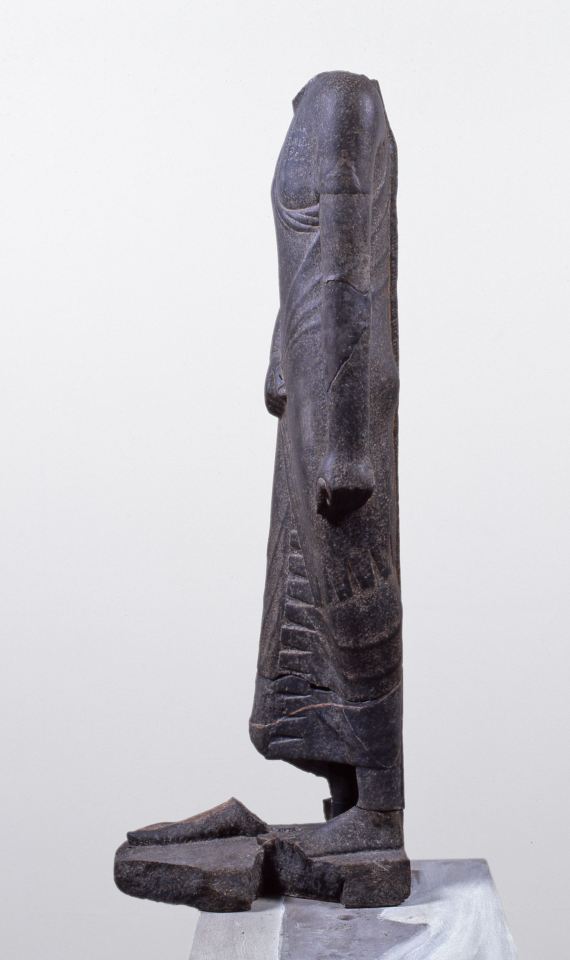

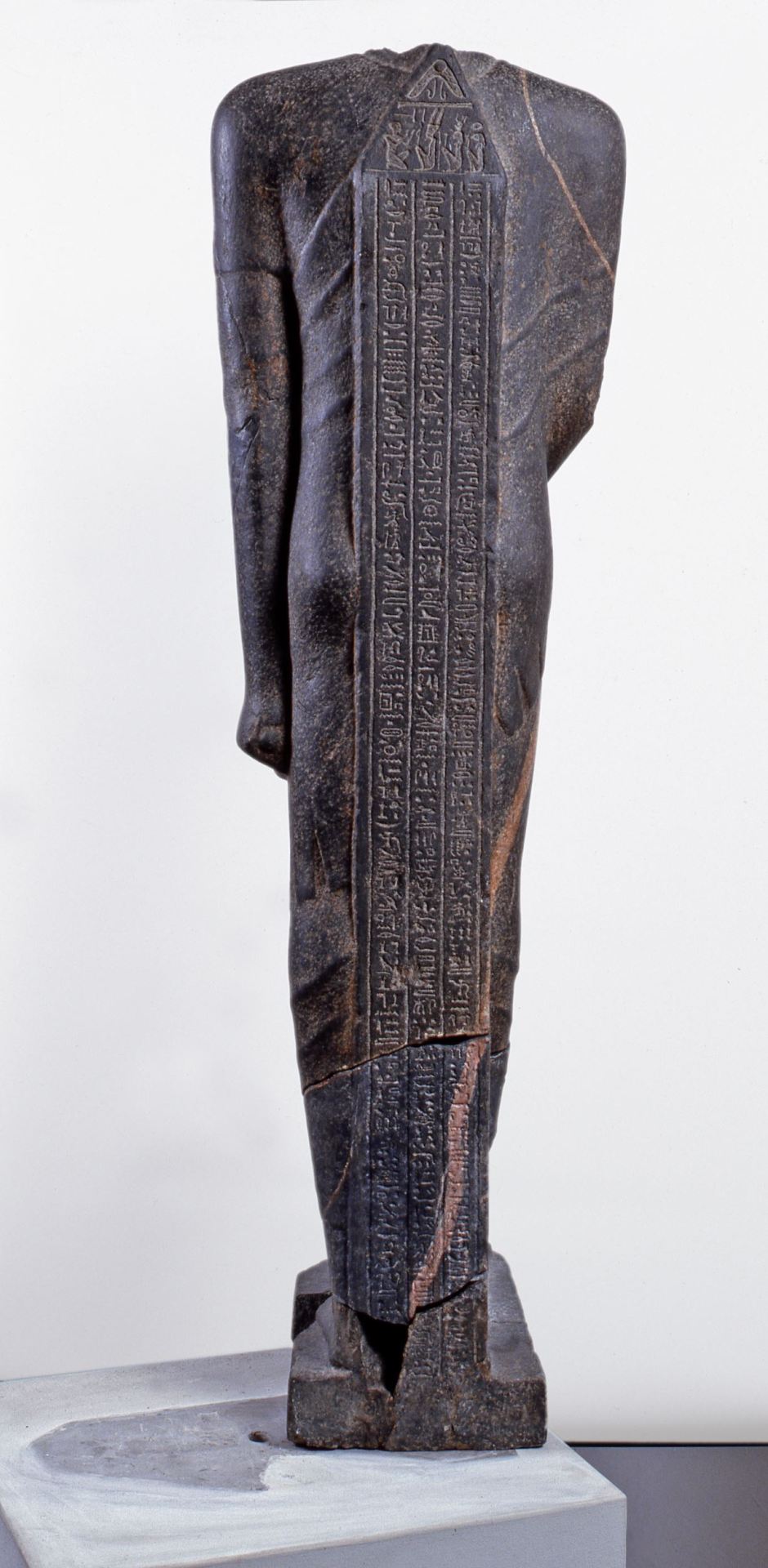
Statue of Petimuthes wearing the “Persian garment” - Museo Egizio Collection
Inventory Number: Cat. 3062
Hellenistic Period, Reign of Ptolemy X, 107–88 BCE
Location Information: Thebes, Karnak / temple of Amun (?)
Description:
This statue of general Petimuthes comes from Thebes. On the back-pillar is an inscription referring to a war fought in the East at the end of the second century BC; more specifically, it mentions Cleopatra III and her son Ptolemy X’s capture of the city of Ptolemais, present-day Acre in Galilee. Petimuthes wears the so-called “Persian” fringed garment, reserved to high dignitaries ever since the Late Period. The text on the back-pillar of the statue was completed with a fragment found in Karnak, where Petimuthes promoted the construction of a storehouse in the temple of Amon.
#Statue of Petimuthes wearing the “Persian garment”#ptolemaic#thebes#upper egypt#karnak#temple of amun#museo egizio#Cat. 3062#mens clothing#PMC
0 notes
Text
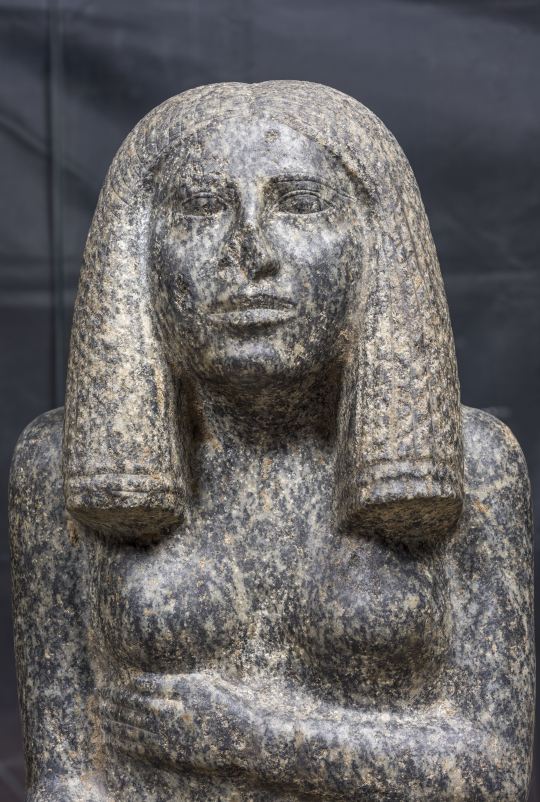
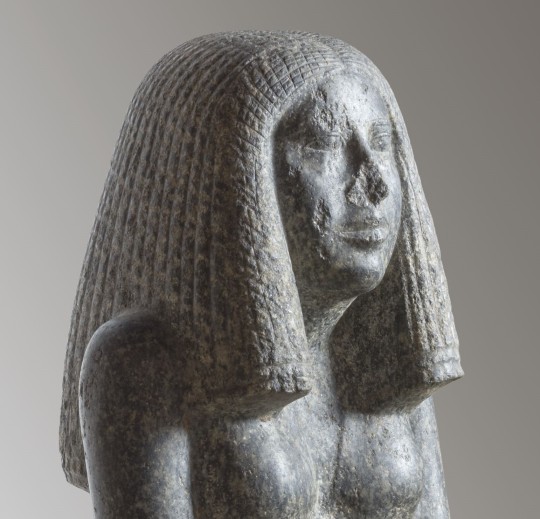


Statue of princess Redji - Museo Egizio Collection
Inventory Number: Cat. 3065
Old Kingdom, Dynasty 3, 2592–2544 BCE
Location Information: Saqqara
Description:
The inscription on the base indicates that the statue
belonged to a “king’s daughter” named Redji. Although
the name of her father is not mentioned, the style of the
statue dates it to the beginning of the Old Kingdom.
Statues like this were not intended as faithful portraits
of the deceased; rather, they served as substitutes of the
deceased in the tomb, somehow preserving his or her
bodily integrity. This is hence an idealized image of the
subject. The style is typical for the period: a rigid posture,
a very short neck, and a voluminous wig.
#museo egizio#Cat. 3065#old kingdom#dynasty 5#saqqara#lower egypt#Statue of princess Redji#womens hair and wigs#OKWHW
0 notes
Text



Double Seating Image of Maya and Merit - Rijksmuseum Von Oudheden Collection
Photo Focus: Maya
Inventory Number: AST 3
New Kingdom, Dynasty 18, ca. 1319 BC.
Location Information: Egypt, Saqqara, tomb of Maya
Description:
Maya was one of the great men in the Egypt of Tutankhamun and Horemheb, but his career may have started earlier: during the reign of the famous pharaoh Akhenaten. Under Tutankhamun and Horemheb he was a kind of minister of finance and was in charge of all major construction projects in the country. The construction and maintenance of the important cemeteries also fell under his responsibility, especially those of the pharaohs in the Valley of the Kings.
Additional Image Source: Maya and Merit, Rob Koopman @ Fl
#Double Seating Image of Maya and Merit#rijksmuseum von oudheden#AST 3#new kingdom#new kingdom pr#dynasty 18#saqqara#lower egypt#tomb of maya#mens hair and wigs#NKPRMHW
1 note
·
View note
Text


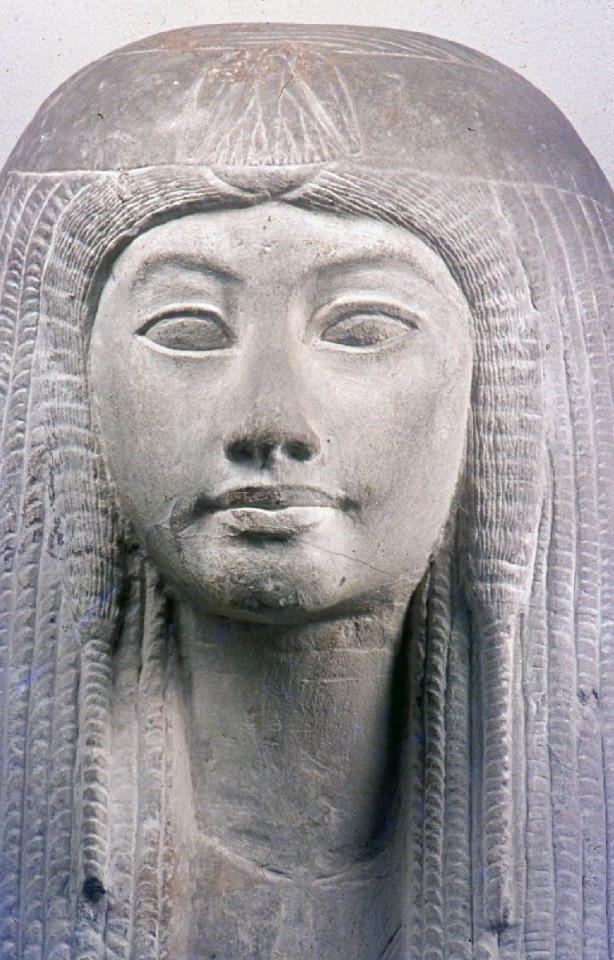
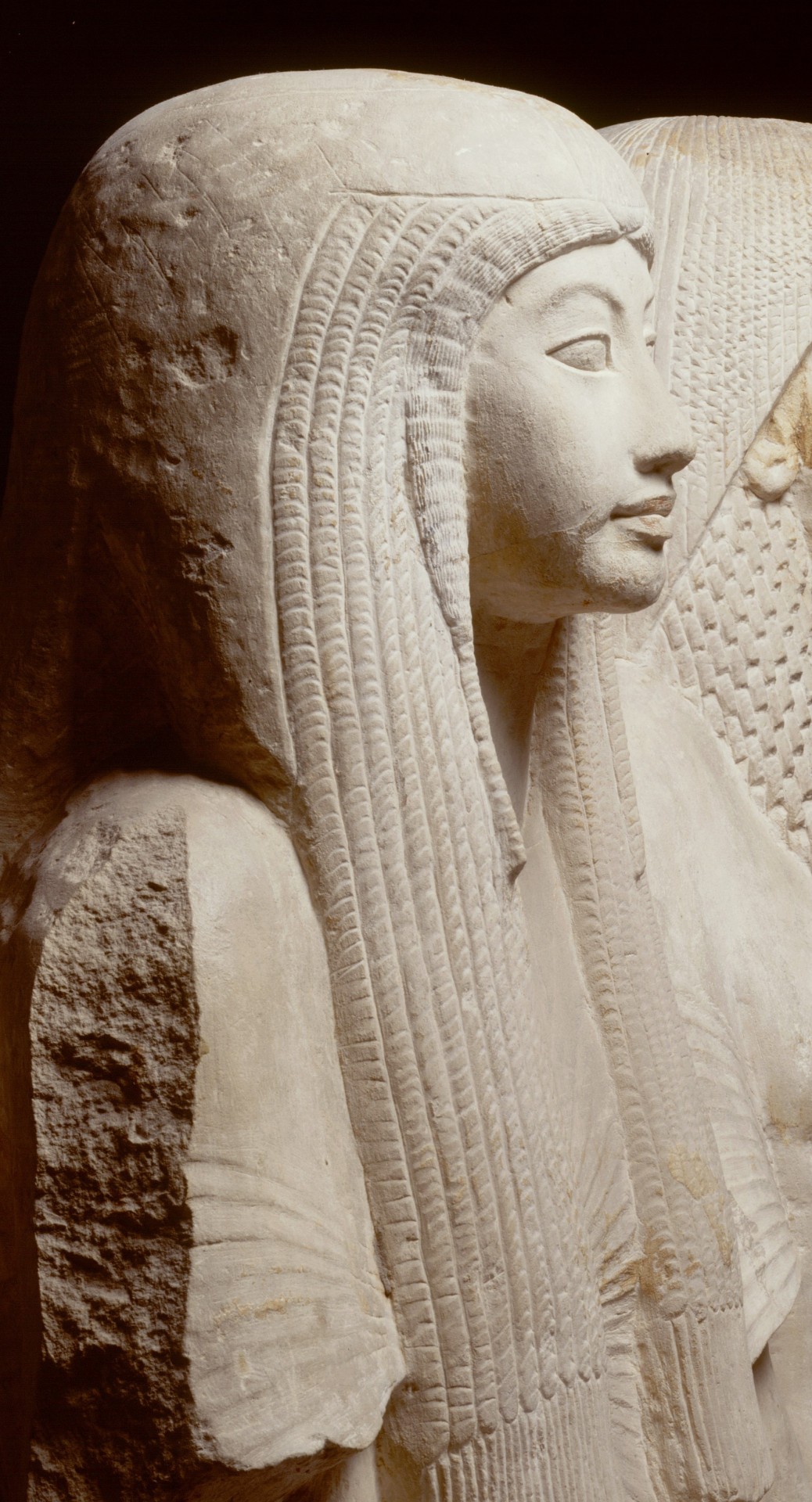
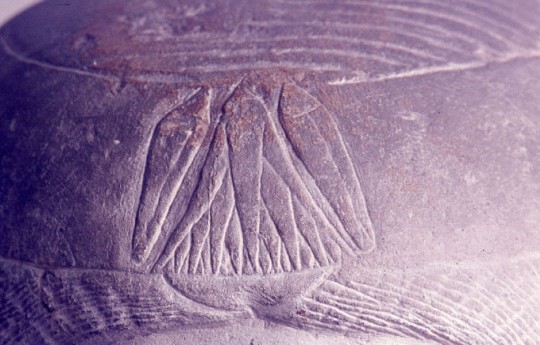
Double Seating Image of Maya and Merit - Rijksmuseum Von Oudheden Collection
Photo Focus: Merit
Inventory Number: AST 3
New Kingdom, Dynasty 18, ca. 1319 BC.
Location Information: Egypt, Saqqara, tomb of Maya
Description:
Maya was one of the great men in the Egypt of Tutankhamun and Horemheb, but his career may have started earlier: during the reign of the famous pharaoh Akhenaten. Under Tutankhamun and Horemheb he was a kind of minister of finance and was in charge of all major construction projects in the country. The construction and maintenance of the important cemeteries also fell under his responsibility, especially those of the pharaohs in the Valley of the Kings.
Additional Image Source: Maya and Merit, Rob Koopman @ Fl
#Double Seating Image of Maya and Merit#rijksmuseum von oudheden#AST 3#new kingdom#new kingdom pr#dynasty 18#lower egypt#saqqara#tomb of maya#womens hair and wigs#NKPRWHW
1 note
·
View note
Text


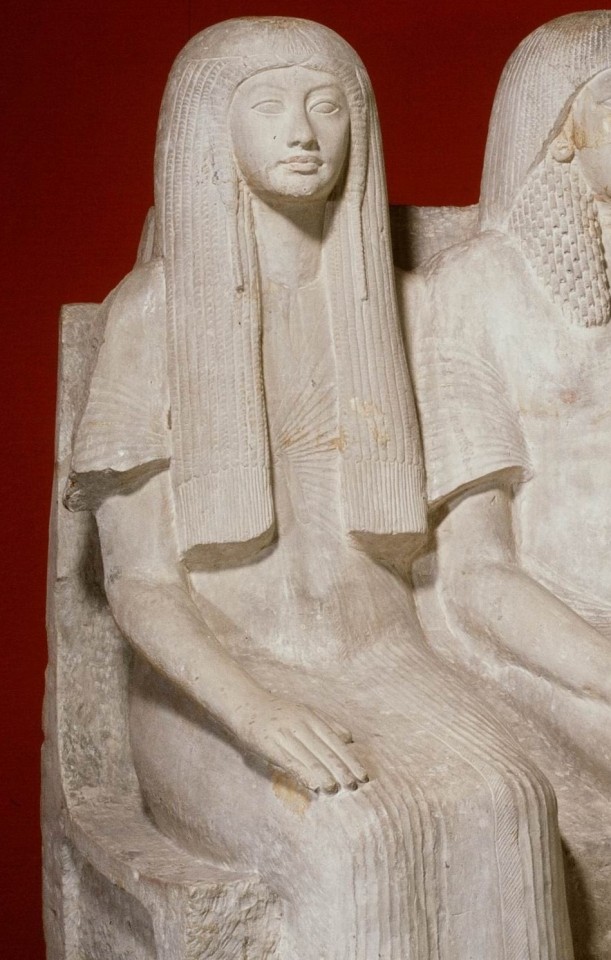

Double Seating Image of Maya and Merit - Rijksmuseum Von Oudheden Collection
Photo Focus: Merit
Inventory Number: AST 3
New Kingdom, Dynasty 18, ca. 1319 BC.
Location Information: Egypt, Saqqara, tomb of Maya
Description:
Maya was one of the great men in the Egypt of Tutankhamun and Horemheb, but his career may have started earlier: during the reign of the famous pharaoh Akhenaten. Under Tutankhamun and Horemheb he was a kind of minister of finance and was in charge of all major construction projects in the country. The construction and maintenance of the important cemeteries also fell under his responsibility, especially those of the pharaohs in the Valley of the Kings.
Additional Image Source: Maya and Merit, Rob Koopman @ Flic
#Double Seating Image of Maya and Merit#rijksmuseum von oudheden#AST 3#new kingdom#new kingdom pr#dynasty 18#lower egypt#saqqara#tomb of maya#womens clothing#NKPRWC
1 note
·
View note
Text


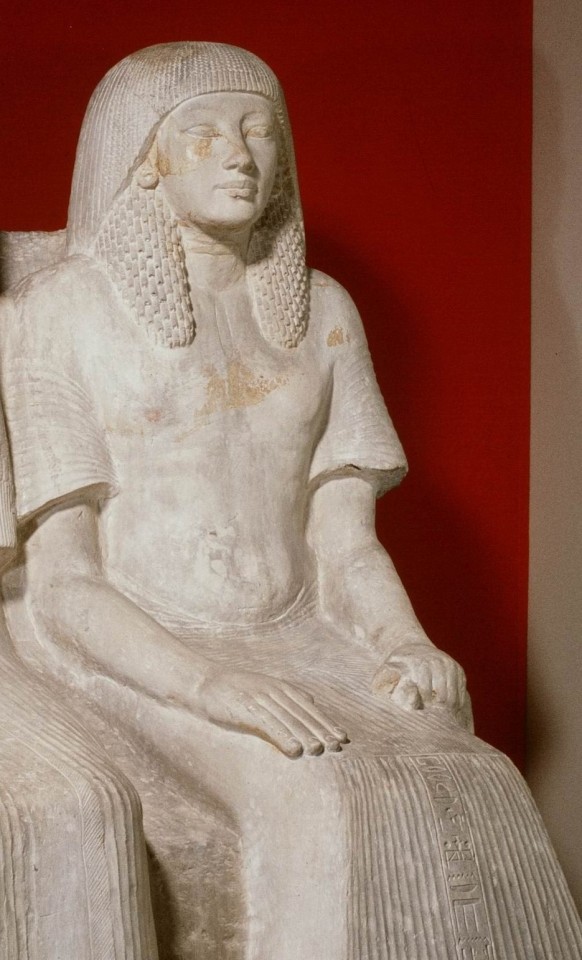
Double Seating Image of Maya and Merit - Rijksmuseum Von Oudheden Collection
Photo Focus: Maya
Inventory Number: AST 3
New Kingdom, Dynasty 18, ca. 1319 BC.
Location Information: Egypt, Saqqara, tomb of Maya
Description:
Maya was one of the great men in the Egypt of Tutankhamun and Horemheb, but his career may have started earlier: during the reign of the famous pharaoh Akhenaten. Under Tutankhamun and Horemheb he was a kind of minister of finance and was in charge of all major construction projects in the country. The construction and maintenance of the important cemeteries also fell under his responsibility, especially those of the pharaohs in the Valley of the Kings.
Additional Image Source: Maya and Merit, Rob Koopman @ Flickr
#rijksmuseum von oudheden#AST 3#new kingdom#new kingdom pr#dynasty 18#saqqara#lower egypt#tomb of maya#mens clothing#NKPRMC
1 note
·
View note